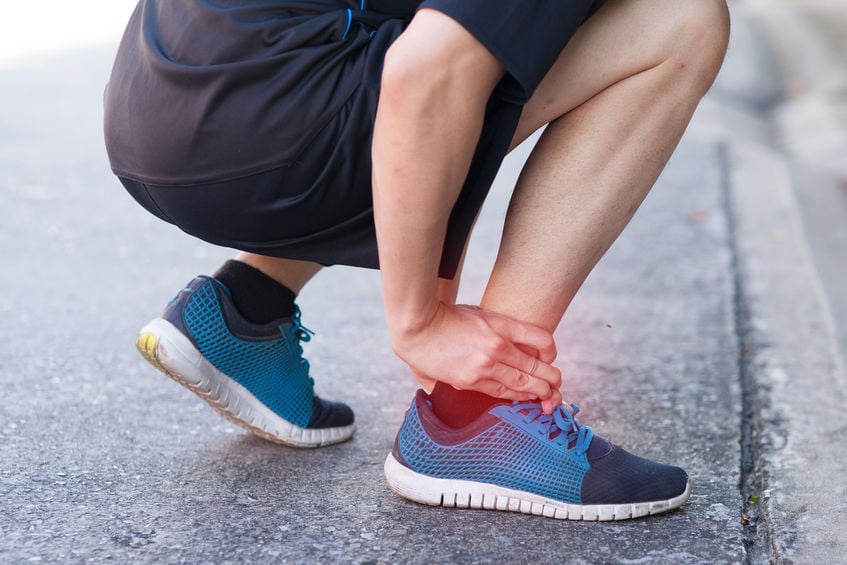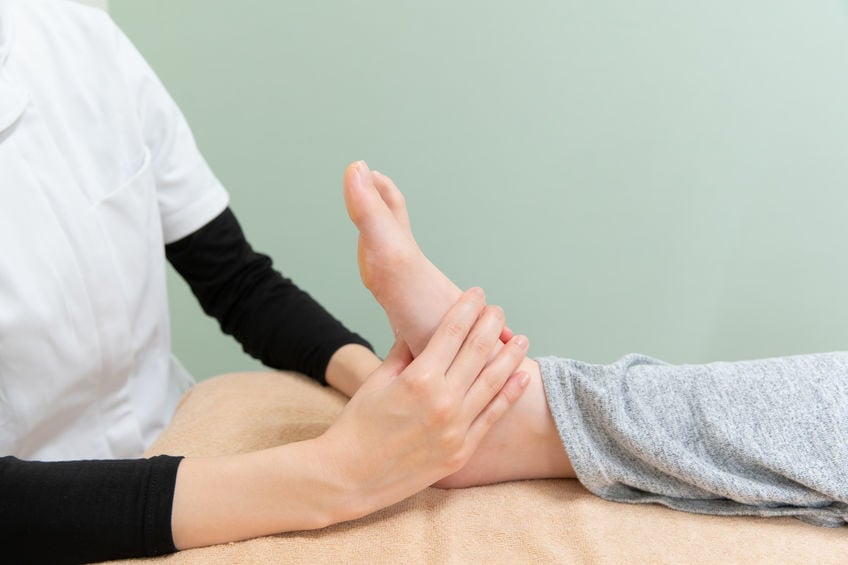Running To Ankle Replacement Surgery
As most people know, the ankle is critical for walking, running, and general body movement. The joint forms when the end of the tibia and fibula leg bones meet the talus bone at the top of the foot. Between these bones lie articular cartilage and other components that help with movement and shock absorption. Over time, however, severe arthritis or injury can wear away these components, causing inflammation and stiffness. As a result, walking, running, and climbing stairs is difficult, impacting the quality of life. Ankle replacement surgery can help, especially if conservative methods fail. After surgery, the patient will require physical therapy (PT) to restore effective movement.

What happens during surgery?
The goal of ankle replacement surgery is to remove any damaged cartilage or bone spurs causing limited movement. From there, a surgeon installs a special prosthesis to serve as the new joint. Total ankle replacement can be done by making minor incisions on the front of the foot and leg. The surgeon removes the damaged articular cartilage and bone spurs. Next, the ends of the tibia and talus are removed, and the prosthesis is installed. This implant can move from side to side, providing the patient with a similar range of motion (ROM) and mobility.
The road to walking
After ankle replacement comes an extended period of physical therapy. The patient will be off the foot for at least 2 weeks to reduce inflammation and encourage healing. The treated foot should be elevated and iced to help with swelling. Over-the-counter (OTC) medication can help with any post-op pain. Soon after surgery, PT will begin, consisting of ankle pumps and rotations while the foot is elevated. After 2 weeks, the surgeon removes the stitches and places the patient’s foot in a walking boot. More physical therapy exercises can take place at this point to improve the patient’s gait, strength, and balance.
Strengthen the ankle
The patient will continue with ankle-strengthening exercises in a resting position for up to 6 weeks. These exercises include pumps, rotations, flexions, ankle eversion, and extensions. These are performed with a tubing or resistance band to improve strength over time. Since the patient will be stationary for long periods, upper body exercises, including the core and hips, can also help.
Boosting strength and balance
When the patient is in a walking boot and can apply some pressure to the foot, the therapist will add more exercises. These movements are designed to strengthen the hips, hamstrings, and glutes. Further exercises help the ankle move side to side and improve the patient’s gait. Balance will play an essential role in recovery, especially as the patient did not use the leg for several weeks. Stability exercises include standing on a single leg, standing on the toes while holding a wall, or tracing letters with the foot. Along with gait and balance training, walking, stationary bike exercises, and aquatic therapy all help.
How long does recovery take?
On average, ankle replacement recovery takes about 3 months or longer. The patient’s health, weight, age, activity level, and adherence to physical therapy can all affect how long recovery takes. After about 3 months, most patients can resume daily activities like walking, climbing stairs, and driving. However, there will be limitations to the ankle after recovery. Patients typically aren’t allowed to compete in extreme physical sports, run long distances, or play high-contact sports like football, basketball, or soccer.
A future on both feet
Total ankle replacement can help people get moving again after years of arthritic pain. The surgery removes damaged bones and installs a durable implant. However, PT will be vital to resume daily activities. The patient must restore ROM, flexibility, strength, and balance over several months. Physical therapy requires consistency and patience. However, when the exercises are done correctly, the patient can resume activities sooner.
More Articles from MVSC
December 14, 2023
Ankle pain is common, but sometimes arthritis is at play. An orthopedic surgeon may recommend subtalar fusion for patients.
November 28, 2023
Is bunionectomy a solution for foot pain caused by bunions? Learn about surgical and non-surgical options before a decision.
September 26, 2023
An Achilles tendon recovery timeline can be long and grueling. With rest and physical therapy, patients can see faster results.
September 19, 2023
Big toe arthritis can cause severe discomfort if left untreated. Hallux rigidus repair can provide extensive relief for patients.







